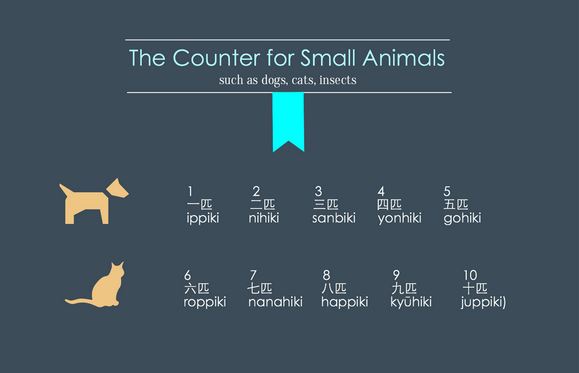
One of the beautiful (or painful, depending on how you look at it) aspects of the Japanese language is its complex system of numbers and counting methods. For starters, there are two commonly used systems of numbers–often referred to as the Sino-Japanese numbers and the native Japanese numbers–that are used in different contexts, as well as a seemingly limitless number of counter words. Confused yet?
So how the heck do you become a master of Japanese numbers? Well, a good way to start is by checking out this handy-dandy infographic put out by Japanese Video Cast!
Here’s a typical conversation between a student of Japanese and his/her teacher:
Student: “OK, how do you say ‘one’ in Japanese?”
Teacher: “Well, it depends on what you’re counting.”
Student: “Wait–you mean there’s more than one way to say ‘one’!?”
While the basic way to count to ten in Japanese is “ichi, ni, san…,” the game changes as soon as you start trying to count something; i.e., quantify objects. To do so, you must attach a specific “counter” onto the end of a numeric prefix depending on what it is you’re counting–different objects are grouped together by similar qualities. For example, long, thin objects are counted using the counter “-hon,” cars are counted using the counter “-dai,” and birds as well as rabbits are counted using the counter “-wa.” Some people find it comparable to the way we say “three cups of coffee” or “two scoops of ice cream” in English. Just trying to learn what objects go with which counters is a chore in itself!
But that’s not all, because some words undergo a kind of phonological assimilation when certain counters are attached, resulting in a completely different pronunciation! Forget “ichihon;” when counting using the counter “-hon,” for instance, you actually have to say “ippon, nihon, sanbon…” and so on.
But practice makes perfect, and we promise that you’ll get the hang of things (eventually). To aid you in your quest, we’d like to share this magnificent infographic from Japanese Video Cast with you all. We’ve broken it up into different sections for ease of viewing, but the full, undivided image can be found here. San, ni, ichi…OK, let’s start counting!
▼ First, the basics: otherwise known as the Sino-Japanese numbers
▼ Also known as the native Japanese numbers
▼ Here we begin looking at some basic counters
Did you find any patterns in these examples?
By the way, my favorite trick for learning new vocabulary is to tape lists or sticky notes of new words onto my bathroom mirror. That way, I’m sure to see them and get a little studying done while brushing my teeth at the very least!
Source: Design Taxi
Images: Japanese Video Cast

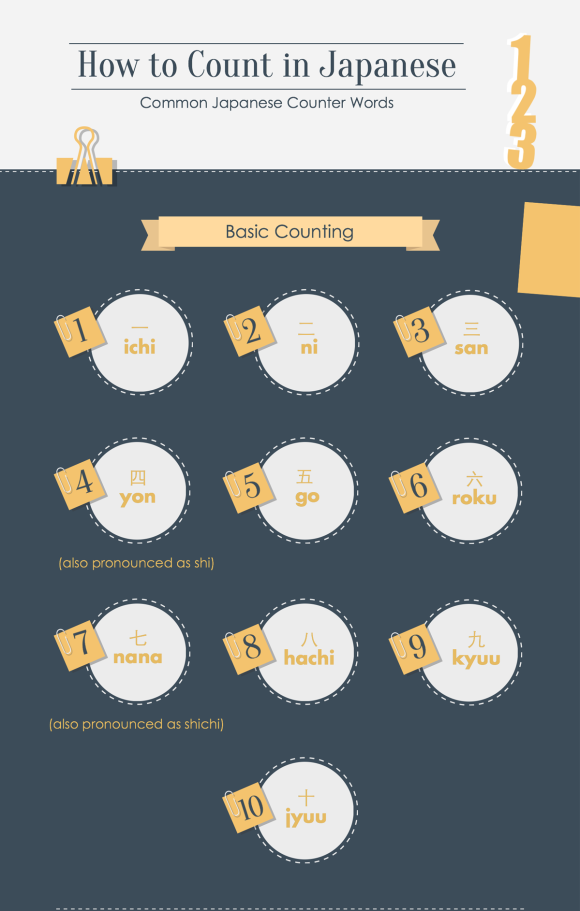
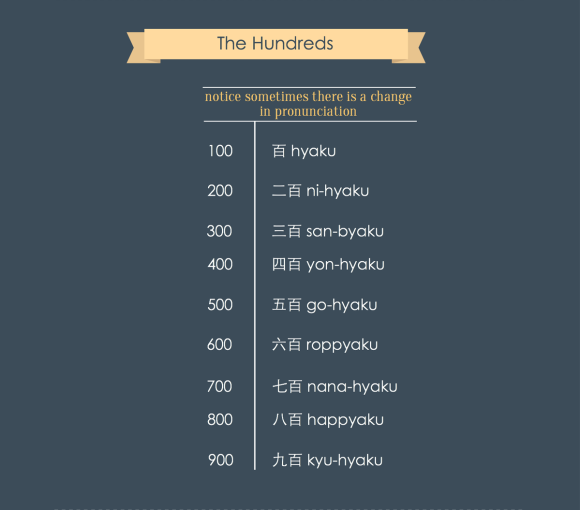
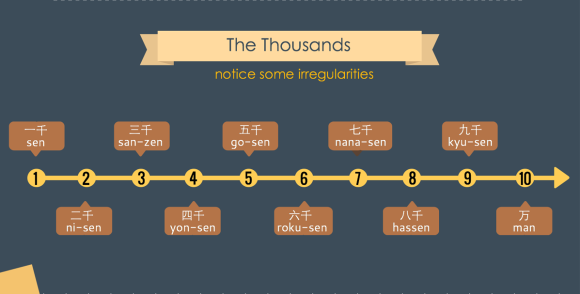
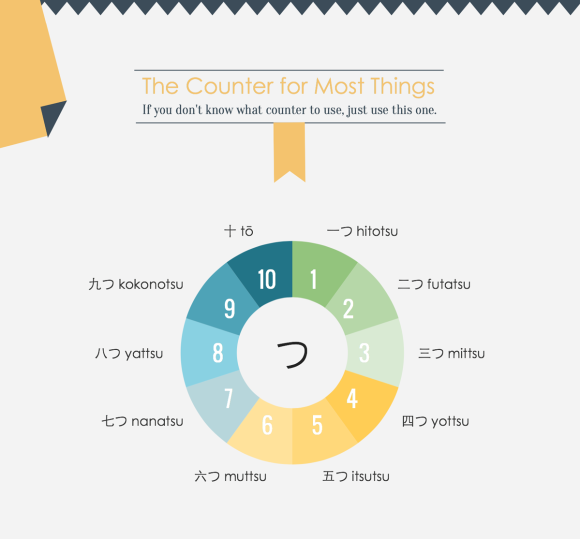

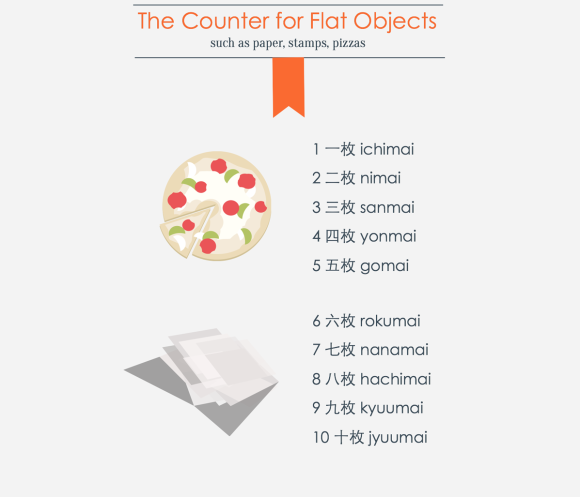
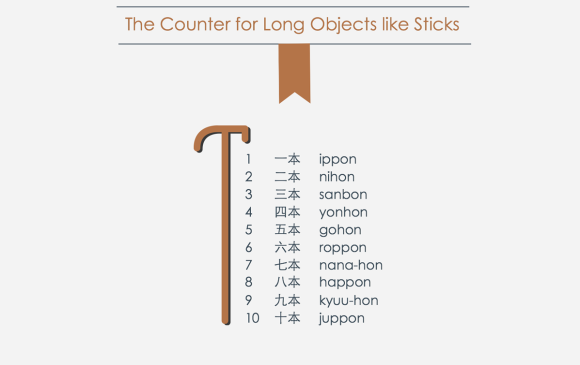
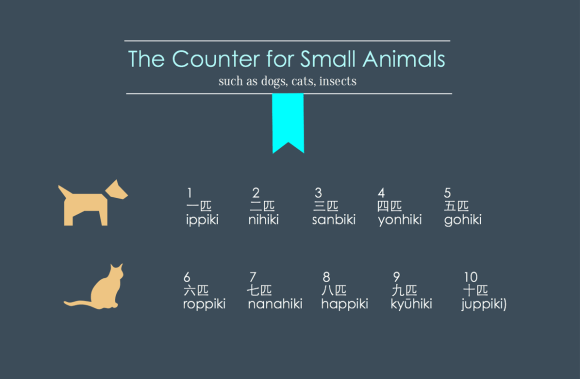
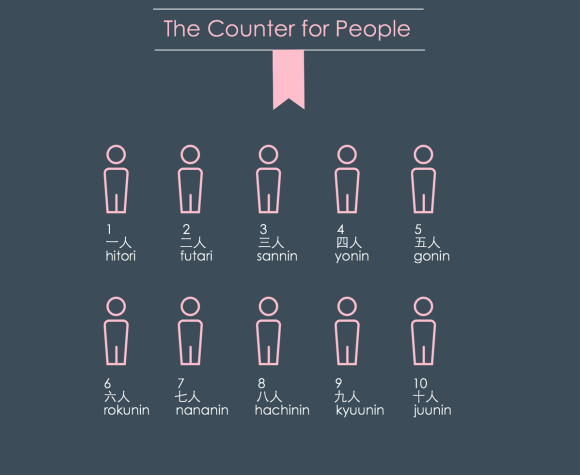
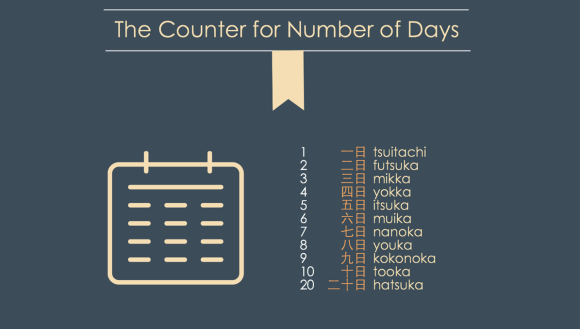
 First-grader’s math test accidentally turns into treatise on confusing Japanese linguistics
First-grader’s math test accidentally turns into treatise on confusing Japanese linguistics W.T.F. Japan: Top 5 most confusing Japanese counter words【Weird Top Five】
W.T.F. Japan: Top 5 most confusing Japanese counter words【Weird Top Five】 Everything you need to know about dining at a sushi restaurant—in handy infographics!【Pics】
Everything you need to know about dining at a sushi restaurant—in handy infographics!【Pics】 The complete guide to sushi in one handy picture
The complete guide to sushi in one handy picture Counting sheep to get to sleep may work after all, unless you speak Japanese
Counting sheep to get to sleep may work after all, unless you speak Japanese That time Seiji called JASRAC to ask why he didn’t get paid royalties for his song being on TV
That time Seiji called JASRAC to ask why he didn’t get paid royalties for his song being on TV We revisited Sweets Paradise after a decade to see if Japan’s dessert buffet still delivers
We revisited Sweets Paradise after a decade to see if Japan’s dessert buffet still delivers 7 great places to see Mt. Fuji from without having to climb it
7 great places to see Mt. Fuji from without having to climb it Tokyo store sells beautiful Japanese fruit sandwiches that look like floral arrangements
Tokyo store sells beautiful Japanese fruit sandwiches that look like floral arrangements Stay in a hotel in Japan where you can see a UFO
Stay in a hotel in Japan where you can see a UFO Taiwanese man set off by brush of woman’s hair, throws boiling soup on her face【Video】
Taiwanese man set off by brush of woman’s hair, throws boiling soup on her face【Video】 Asahi Super Dry’s draft beer in a can, the Nama Jockey Can, is here【Taste test】
Asahi Super Dry’s draft beer in a can, the Nama Jockey Can, is here【Taste test】 Cup Noodle tries an authentic Jiro-style ramen, but something’s not quite right
Cup Noodle tries an authentic Jiro-style ramen, but something’s not quite right Hello Kitty Choco Egg figures are an adorable trip through three periods of Japanese pop culture【Pics】
Hello Kitty Choco Egg figures are an adorable trip through three periods of Japanese pop culture【Pics】 New Shinkansen luggage rules start today, set to make travel more expensive and less convenient
New Shinkansen luggage rules start today, set to make travel more expensive and less convenient Starbucks Japan ready to get Year of the Horse started with adorable drinkware and plushies【Pics】
Starbucks Japan ready to get Year of the Horse started with adorable drinkware and plushies【Pics】 Cyberpunk anime meets traditional culture in Ghost in the Shell gold leaf Japanese changing screens
Cyberpunk anime meets traditional culture in Ghost in the Shell gold leaf Japanese changing screens Hayao Miyazaki says Happy New Year to Studio Ghibli fans with new art for Year of the Horse
Hayao Miyazaki says Happy New Year to Studio Ghibli fans with new art for Year of the Horse We found possibly the quietest Japanese-style hotel in Tokyo’s bustling Shinjuku district
We found possibly the quietest Japanese-style hotel in Tokyo’s bustling Shinjuku district 7-Eleven Japan’s ramen-cooking robot whipped us up a bowl of noodles【Taste test】
7-Eleven Japan’s ramen-cooking robot whipped us up a bowl of noodles【Taste test】 Sumo Sanrio! Hello Kitty and pals team up with Japan Sumo Association for new merch【Pics】
Sumo Sanrio! Hello Kitty and pals team up with Japan Sumo Association for new merch【Pics】 Japan’s oldest largetooth sawfish in captivity back on display in Mie Prefecture
Japan’s oldest largetooth sawfish in captivity back on display in Mie Prefecture More Than a Capsule Stay: Why Solo Travelers Choose “global cabin Yokohama Chinatown”
More Than a Capsule Stay: Why Solo Travelers Choose “global cabin Yokohama Chinatown” 7-Eleven Japan starts new temporary luggage storage service in over 300 branches
7-Eleven Japan starts new temporary luggage storage service in over 300 branches Disillusionment at Tsukiji’s tourist-target prices led us to a great ramen restaurant in Tokyo
Disillusionment at Tsukiji’s tourist-target prices led us to a great ramen restaurant in Tokyo Starbucks teams up with 166-year-old Kyoto doll maker for Year of the Horse decorations【Photos】
Starbucks teams up with 166-year-old Kyoto doll maker for Year of the Horse decorations【Photos】 Tokyo considering law requiring more trash cans following litter increase in heavily touristed area
Tokyo considering law requiring more trash cans following litter increase in heavily touristed area Tokyo’s Tsukiji sushi neighborhood asks tour groups to stay away for the rest of the month
Tokyo’s Tsukiji sushi neighborhood asks tour groups to stay away for the rest of the month Tokyo event lets you travel back in time, for free, to celebrate 100 years since Showa era start
Tokyo event lets you travel back in time, for free, to celebrate 100 years since Showa era start Sanrio theme park in Japan announces plans to expand into a Sanrio resort
Sanrio theme park in Japan announces plans to expand into a Sanrio resort Japan may add Japanese language proficiency, lifestyle classes to permanent foreign resident requirements
Japan may add Japanese language proficiency, lifestyle classes to permanent foreign resident requirements Stamina-destroying “Paralysis Noodles” are Tokyo’s newest over-the-top ramen innovation
Stamina-destroying “Paralysis Noodles” are Tokyo’s newest over-the-top ramen innovation Survey asks foreign tourists what bothered them in Japan, more than half gave same answer
Survey asks foreign tourists what bothered them in Japan, more than half gave same answer Japan’s human washing machines will go on sale to general public, demos to be held in Tokyo
Japan’s human washing machines will go on sale to general public, demos to be held in Tokyo Japan’s deadliest food claims more victims, but why do people keep eating it for New Year’s?
Japan’s deadliest food claims more victims, but why do people keep eating it for New Year’s? We deeply regret going into this tunnel on our walk in the mountains of Japan
We deeply regret going into this tunnel on our walk in the mountains of Japan Studio Ghibli releases Kodama forest spirits from Princess Mononoke to light up your home
Studio Ghibli releases Kodama forest spirits from Princess Mononoke to light up your home Major Japanese hotel chain says reservations via overseas booking sites may not be valid
Major Japanese hotel chain says reservations via overseas booking sites may not be valid Put sesame oil in your coffee? Japanese maker says it’s the best way to start your day【Taste test】
Put sesame oil in your coffee? Japanese maker says it’s the best way to start your day【Taste test】 No more using real katana for tourism activities, Japan’s National Police Agency says
No more using real katana for tourism activities, Japan’s National Police Agency says Starbucks Japan reveals new sakura drinkware collection, inspired by evening cherry blossoms
Starbucks Japan reveals new sakura drinkware collection, inspired by evening cherry blossoms Updated cherry blossom forecast shows extra-long sakura season for Japan this year
Updated cherry blossom forecast shows extra-long sakura season for Japan this year 10,000 or 1,0000? Japanese schools are starting to move commas on big numbers, but why?
10,000 or 1,0000? Japanese schools are starting to move commas on big numbers, but why? Why are there different counters for animals and people in Japanese?
Why are there different counters for animals and people in Japanese? Isolation driving Japanese idol to dismantle and itemize fruits and other foods
Isolation driving Japanese idol to dismantle and itemize fruits and other foods Changing attitudes about remarriage help create a new Japanese word: maru ni
Changing attitudes about remarriage help create a new Japanese word: maru ni Japanese curry chain becomes a hot topic with foreigners on Reddit, but is it any good?
Japanese curry chain becomes a hot topic with foreigners on Reddit, but is it any good? Can you figure it out? Japanese man creates puzzling perpetual motion machine from paper【Video】
Can you figure it out? Japanese man creates puzzling perpetual motion machine from paper【Video】 Survey reveals the top five times Japanese travelers realise just how Japanese they are
Survey reveals the top five times Japanese travelers realise just how Japanese they are Pretty money – Poll reveals Japan’s “coolest” cash
Pretty money – Poll reveals Japan’s “coolest” cash Japanese first grader wins math contest by quantifying “which hiragana are the hardest to write”
Japanese first grader wins math contest by quantifying “which hiragana are the hardest to write” What’s the best type of sushi to end a meal on? Japanese survey picks the pieces
What’s the best type of sushi to end a meal on? Japanese survey picks the pieces 10 Japanese phrases for travelers that will help, amuse, or just plain confuse
10 Japanese phrases for travelers that will help, amuse, or just plain confuse Ninja Soba Goemon: A Japanese restaurant that’s like a ninja hideout
Ninja Soba Goemon: A Japanese restaurant that’s like a ninja hideout Foy foy foy! Harry Potter’s official Japanese LINE stickers are incredibly bizarre
Foy foy foy! Harry Potter’s official Japanese LINE stickers are incredibly bizarre W.T.F. Japan: Top 5 biggest Japanese food challenges【Weird Top Five】
W.T.F. Japan: Top 5 biggest Japanese food challenges【Weird Top Five】 Japanese convenience store showdown – Who’s got the best ikura rice balls?【Taste test】
Japanese convenience store showdown – Who’s got the best ikura rice balls?【Taste test】
Leave a Reply